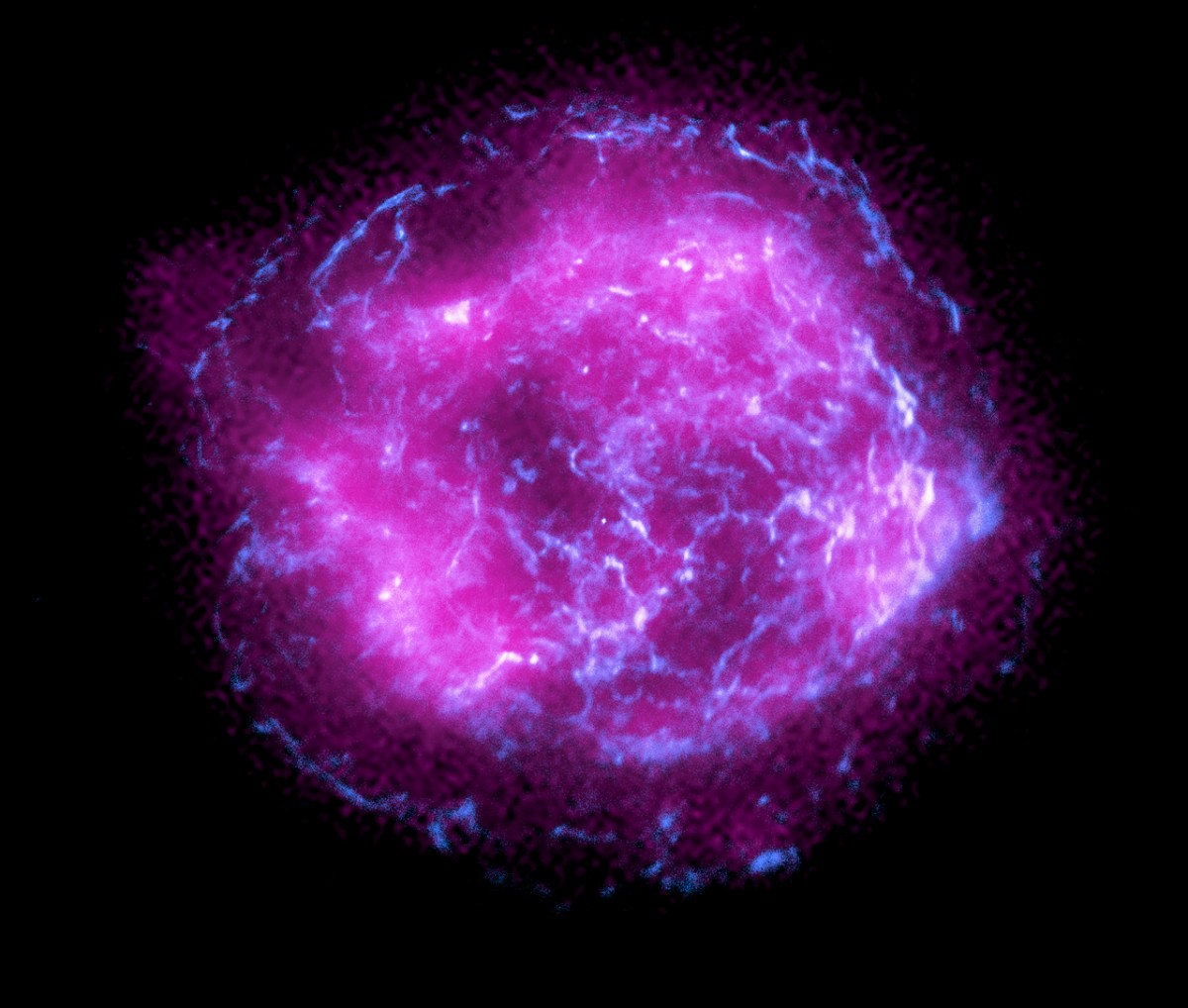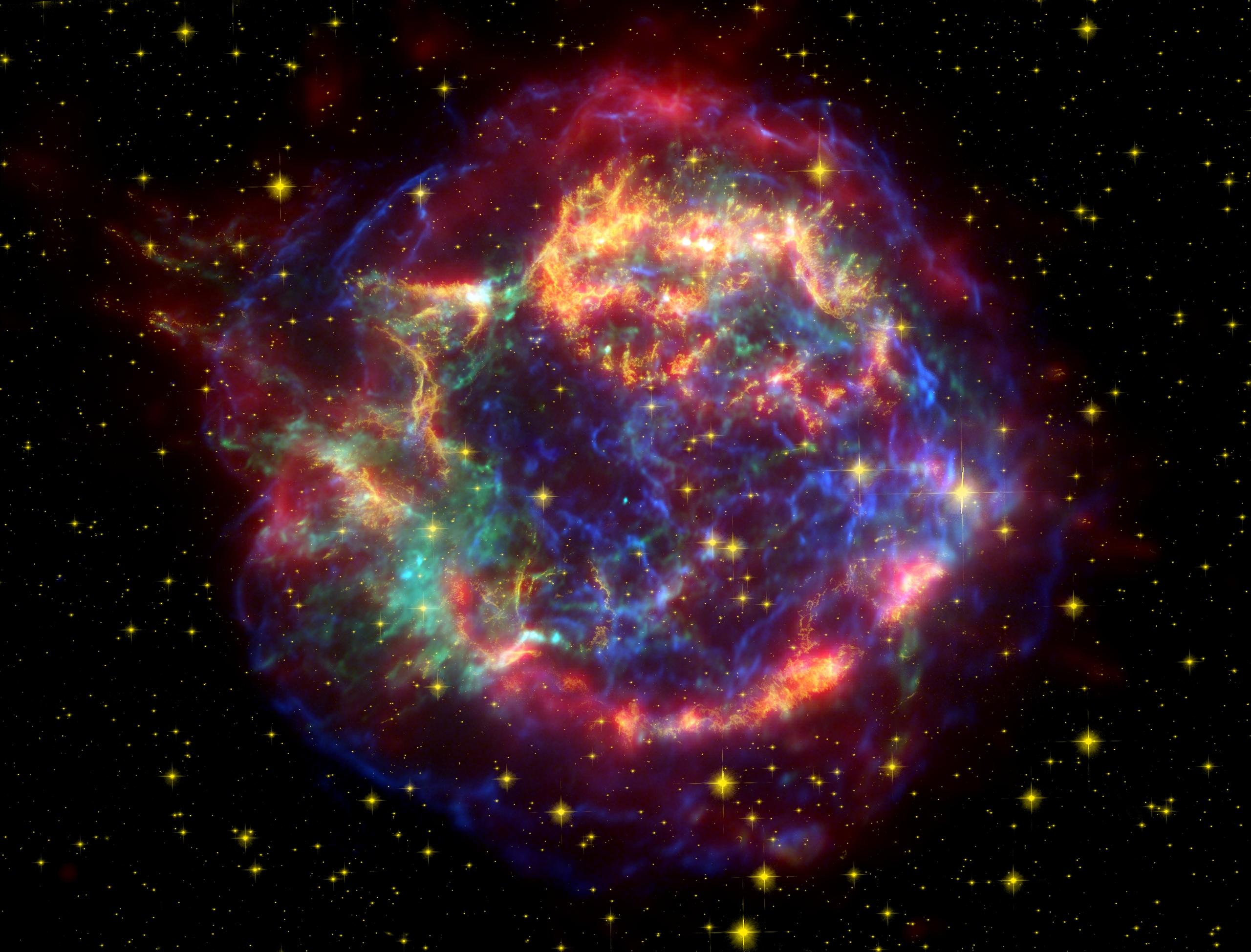
This image of the supernova remnant Cassiopeia A, the first object observed by NASA’s Imaging X-ray Polarimetry Explorer (IXPE) satellite, combines some of the first X-ray data collected by IXPE, shown in magenta, with high-energy X-ray data from NASA’s Chandra X-Ray Observatory, in blue. The satellite later detected polarized X-rays from 4U 0142+61, a highly magnetized neutron star located in the Cassiopeia constellation.
A “beautiful effect” predicted by quantum electrodynamics (QED) can explain the puzzling first observations of polarized Xrays emitted by a magnetar – a neutron star featuring a powerful magnetic field, according to a Cornell astrophysicist.
The extremely dense and hot remnant of a massive star, boasting a magnetic field 100 trillion times str...
Read More






Recent Comments